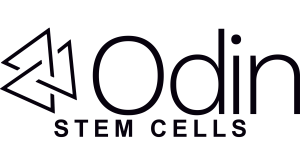Introduction
Stem cell therapy has gained significant attention in recent years due to its potential to revolutionize the care of various medical conditions. This comprehensive guide aims to provide an in-depth understanding of stem cell therapy, its mechanism of action, and its applications in different medical conditions.
What is Stem Cell Therapy?
Stem cell therapy is a regenerative medicine approach that utilizes adult stem cells or umbilical cord blood to repair and regenerate damaged tissues. It involves the administration of stem cells, which are capable of self-renewal and differentiation into various cell types, to target specific tissues or organs. This innovative approach has shown promising results in caring for a range of conditions, from orthopedic issues to autoimmune diseases and neurodegenerative disorders.
Understanding Stem Cell Therapy
Mechanism of Action
Stem cell therapy works by leveraging the unique ability of stem cells to repair and regenerate damaged tissues. The process involves the following steps:
- Stem Cell Administration: Stem cells are administered to the patient through various methods, such as injection, IV infusion, or surgical implantation.
- Differentiation and Integration: The administered stem cells differentiate into the target cell type and integrate into the damaged tissue, replacing or repairing damaged cells.
- Tissue Repair and Regeneration: Repaired cells promote tissue repair and regeneration, improving tissue function and reducing symptoms.
Applications in Various Medical Conditions
Stem cell therapy has been explored for its potential in caring a wide range of medical conditions, including:
- Orthopedic Issues: Stem cell therapy has shown promise in assisting osteoarthritis, tendinitis, and ligament sprains.
- Autoimmune Diseases: Stem cell therapy has been used to care for autoimmune disorders like multiple sclerosis, rheumatoid arthritis, and lupus.
- Neurodegenerative Diseases: Stem cell therapy has been explored for its potential in caring for neurodegenerative conditions such as Parkinson’s disease, Alzheimer’s disease, and amyotrophic lateral sclerosis (ALS).
Practical Aspects of Stem Cell Therapy
How is Stem Cell Therapy Done?
Stem cell therapy typically involves the following steps:
- Stem Cell Collection: Stem cells are collected from the patient’s own body, such as from bone marrow, adipose tissue, or umbilical cord.
- Stem Cell Processing: The collected stem cells are processed to isolate and purify the desired stem cell population.
- Stem Cell Administration: The processed stem cells are administered to the patient through various methods, such as injection, IV infusion, or surgical implantation.
Where Do Stem Cells Come From for Stem Cell Therapy?
Stem cells used in therapy can be either autologous (from the patient’s own body) or allogeneic (from a donor). Autologous stem cells are generally preferred due to fewer ethical concerns and lower risk of rejection. However, allogeneic stem cells can also be used, especially in cases where the patient’s own stem cells are not viable.
Cost and Availability
The cost of stem cell therapy varies widely depending on the location, type of stem cells used, and the specific care plan protocol. In general, stem cell therapy can range from several thousand to tens of thousands of dollars per care plan.
Legal and Insurance Considerations
Stem cell therapy is legal in many countries, but its use is often regulated by government agencies. Insurance coverage for stem cell therapy varies widely, and it is often not covered by traditional insurance plans.
Efficacy and Duration
The efficacy of stem cell therapy can vary depending on the specific condition being assisted and the individual patient. Success rates and factors influencing effectiveness are discussed below.
Conclusion
Stem cell therapy is a rapidly evolving field with significant potential to revolutionize the treatment of various medical conditions. This comprehensive guide aims to provide an in-depth understanding of stem cell therapy, its mechanism of action, and its applications in different medical conditions. By addressing key questions and controversies, this guide aims to empower readers with the knowledge necessary to make informed decisions about stem cell therapy.
References and Further Reading
A list of sources and suggested articles/books for more information on stem cell therapy is provided below.
Odin Clinic Analysis
Odin Clinic is a leading provider of stem cell therapy, offering a range of care plans for various medical conditions. Their comprehensive approach includes stem cell collection, processing, administration, and ongoing monitoring and support. Odin Clinic’s commitment to using only the highest-quality stem cells and adhering to strict safety protocols has earned them a reputation for excellence in regenerative medicine.
FAQs
What is Another Term for Stem Cell Therapy?
Stem cell therapy is also referred to as regenerative medicine, cell therapy, or tissue engineering.
Which of these is not potentially used for stem cell therapy?
Stem cell therapy is not typically used for caring for infectious diseases.
Who Does Stem Cell Therapy Near Me?
To find local providers and specialists offering stem cell therapy, consult with your healthcare provider or search online for reputable clinics in your area.
Summary of Key Points
- Stem cell therapy is a regenerative medicine approach that utilizes the body’s own cells to repair and regenerate damaged tissues.
- The mechanism of action involves stem cell administration, differentiation, and integration into the target tissue.
- Stem cell therapy has been explored for its potential in caring for various medical conditions, including orthopedic issues, autoimmune diseases, and neurodegenerative disorders.
- Practical aspects of stem cell therapy include stem cell collection, processing, and administration.
- The cost and availability of stem cell therapy vary widely depending on the location and specific care plan protocol.
- Efficacy and duration of stem cell therapy can vary depending on the specific condition being cared for and the individual patient.
- Case studies and real-life examples can provide valuable insights into the potential benefits and limitations of stem cell therapy.
- Controversies and future directions in stem cell therapy include ethical debates, regulatory challenges, and ongoing research and emerging applications.

